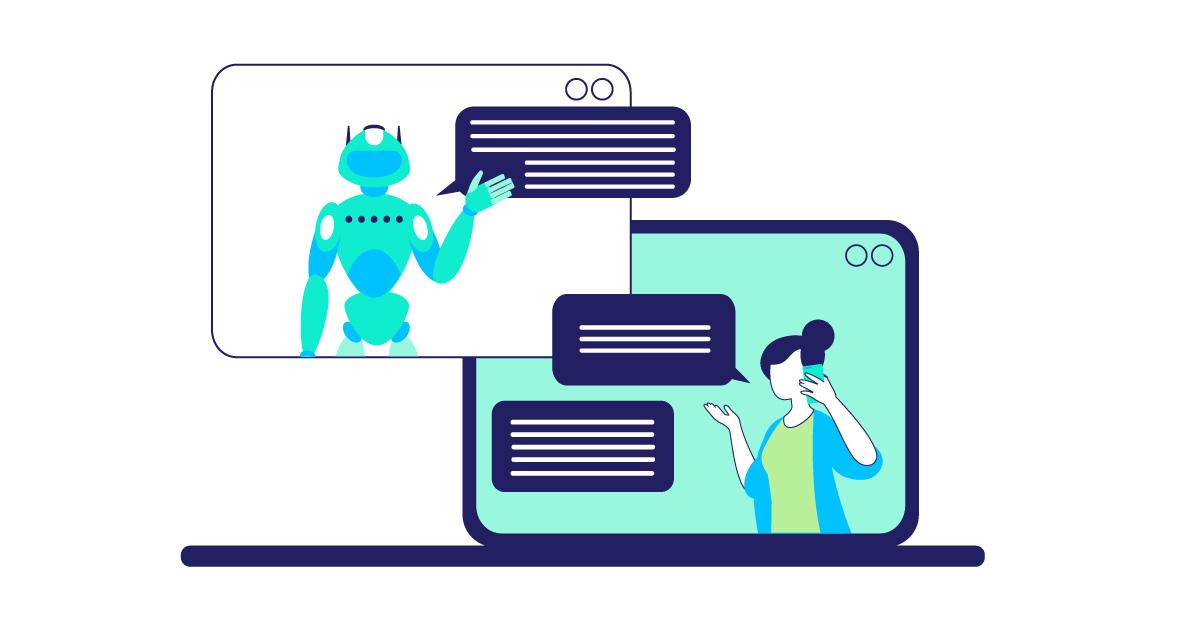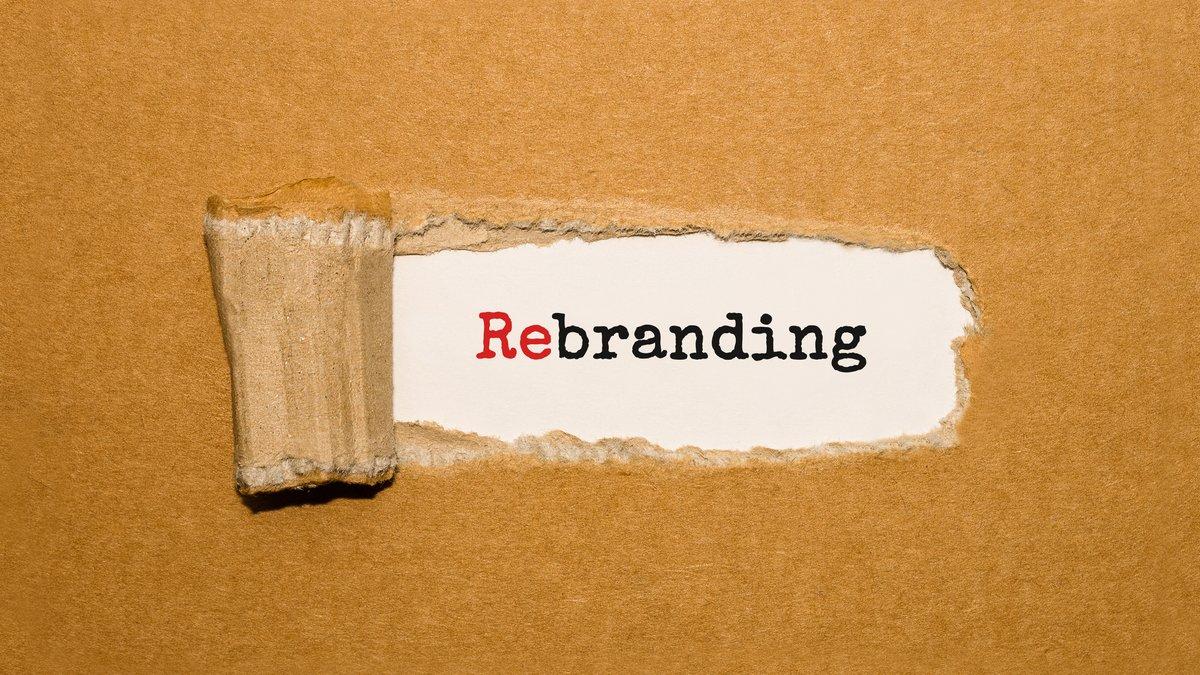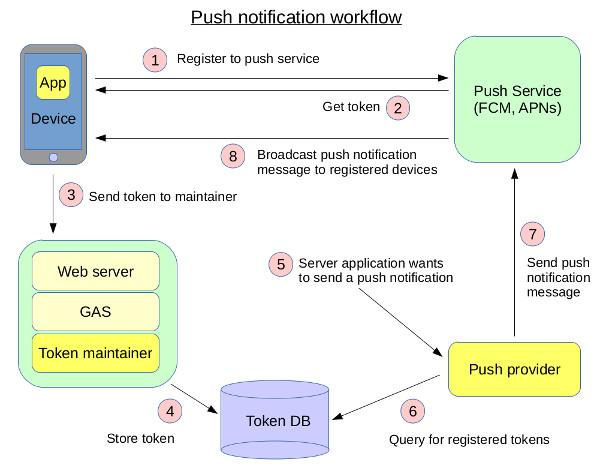
In today’s fast-paced digital world, staying connected with your audience is more critical than ever. Enter push notifications—a powerful tool that can engage users, drive traffic, and boost conversions like nothing else. But with a myriad of push notification services available, how do you choose the right one for your needs? Whether you’re running a small blog, a growing e-commerce site, or a large enterprise, finding the perfect platform can feel overwhelming. Fear not! In this article, we’re diving into the 25 best push notification services available today. We’ll break down their features, pros and cons, and what makes each one unique, giving you the insights you need to make an informed decision. So grab a cup of coffee, settle in, and let’s explore how you can elevate your user engagement with the right push notification service!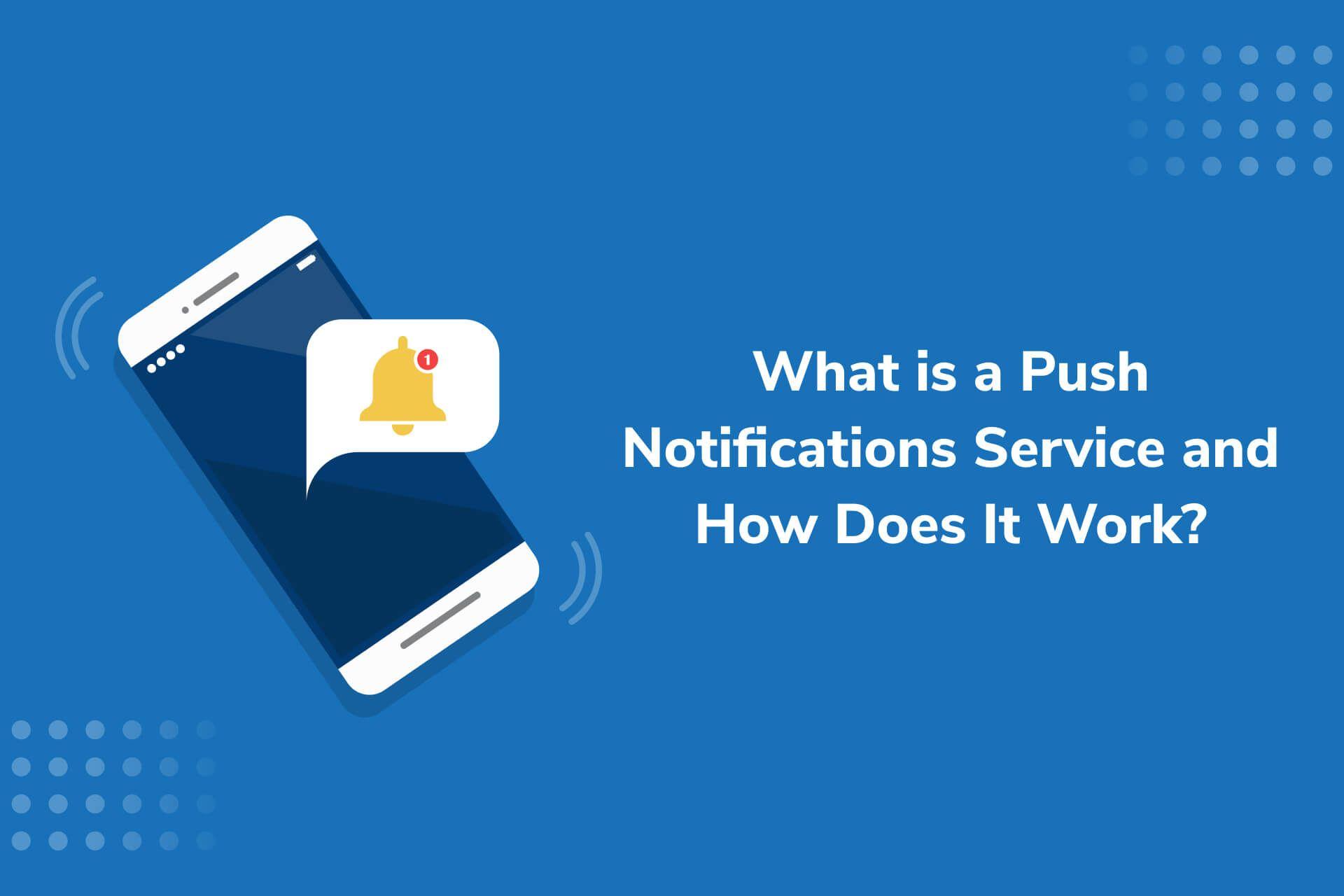
Choosing the Right Push Notification Service for Your Needs
When it comes to selecting a push notification service, the options can be overwhelming. With numerous platforms available, each boasting unique features, it’s crucial to align your choice with your specific business needs. Consider the following factors to help narrow down your options:
- Target Audience: Understand who your audience is. Are they mobile users, web users, or both? Some services excel in certain areas, so choose one that caters to your primary user base.
- Features: Look for essential features such as segmentation, scheduling, A/B testing, and analytics. The more tailored your notifications can be, the better your engagement will be.
- Integration: Ensure that the service integrates seamlessly with your existing tech stack. Whether you use WordPress, Magento, or Shopify, compatibility is key to a smooth operation.
- Cost: Evaluate your budget. Many services offer tiered pricing based on usage. Identify a platform that provides good value without compromising on features.
- Support: Consider the level of customer support provided. A reliable service should offer comprehensive support options, including documentation, live chat, and email assistance.
One helpful way to compare different services is by looking at their unique selling points. Below is a quick overview of some prominent push notification services:
| Service | Key Feature | Best For |
|---|---|---|
| OneSignal | Robust segmentation | Businesses of all sizes |
| PushEngage | A/B testing | E-commerce sites |
| Firebase Cloud Messaging | Free and easy integration | Developers |
| Pusher | Real-time notifications | Mobile and web apps |
| Airship | Deep linking | Large enterprises |
While evaluating these services, pay close attention to user reviews and case studies. Real-world feedback can provide valuable insights into a platform’s performance and reliability. Additionally, consider reaching out to customer support pre-purchase to gauge their responsiveness and willingness to assist.
Another critical aspect is the ease of use. A user-friendly interface will save you time and frustration, especially if your team is not tech-savvy. Look for services that offer comprehensive dashboards and intuitive workflows, enabling you to set up and manage campaigns with minimal hassle.
Lastly, ensure you think long-term. Your needs may change as your business grows, so opt for a service that can scale with you. Flexibility in plans and features will allow you to adjust and adapt without the need to switch platforms later on.
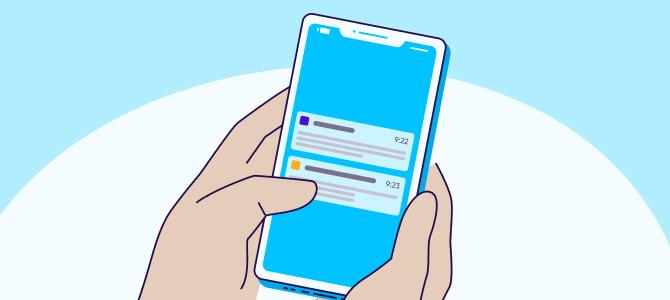
Understanding the Importance of Push Notifications in Today’s Market
In the fast-paced digital landscape, push notifications have emerged as a vital tool for businesses seeking to engage their audience effectively. These bite-sized alerts, delivered directly to users’ devices, create a direct line of communication that can significantly enhance customer interaction and retention. With the right approach, push notifications can transform user engagement, making them an essential component of modern marketing strategies.
One of the most compelling reasons for utilizing push notifications is their ability to deliver timely information. Whether it’s a flash sale, a new product launch, or critical updates, these notifications ensure that users receive important messages exactly when they need them. This immediacy not only helps in driving traffic but also fosters a sense of urgency among consumers, prompting quicker decision-making.
Moreover, push notifications can be personalized to cater to the specific preferences and behaviors of users. By analyzing data, businesses can segment their audience and tailor notifications to resonate with individual interests. This level of personalization enhances user experience and significantly increases the likelihood of engagement. Consider the following benefits of personalized push notifications:
- Increased Engagement: Personalized messages lead to higher open rates and more interactions.
- Improved Customer Loyalty: Tailored content fosters a stronger connection between the brand and the user.
- Higher Conversion Rates: Users are more likely to act on notifications that appeal to their specific interests.
Another critical aspect to consider is the ability to automate and schedule push notifications. By integrating automation tools, businesses can set up campaigns that run on autopilot, ensuring that users receive notifications at optimal times without continuous manual effort. This not only saves time but also enables businesses to maintain a consistent presence in the minds of their audience without overwhelming them.
It’s also worth noting how push notifications can significantly enhance app retention rates. Research shows that users who opt-in to push notifications are more likely to return to an app than those who do not. In fact, apps that utilize push notifications effectively can see a retention increase of up to 50%. By keeping users informed and engaged, businesses can reduce churn and create a loyal customer base.
However, it’s essential to strike the right balance with push notifications. Too many messages can lead to notification fatigue, resulting in users opting out or uninstalling the app altogether. A successful push notification strategy should focus on quality over quantity, ensuring that each message provides value to the recipient. By segmenting your audience and testing different strategies, businesses can find the sweet spot that maximizes user engagement without overwhelming their audience.
As you explore various push notification services, consider the features that align best with your business goals. Look for platforms that offer:
- Robust Analytics: To track engagement and optimize campaigns.
- Advanced Segmentation: For targeted messaging.
- User-Friendly Interface: Ensuring ease of use for your team.
leveraging push notifications effectively can be a game-changer in today’s competitive market. Whether you’re aiming to boost customer engagement, increase retention, or drive sales, the strategic use of this powerful communication tool can lead to remarkable outcomes. Choosing the right push notification service will ultimately empower your business to harness the full potential of this marketing tactic.
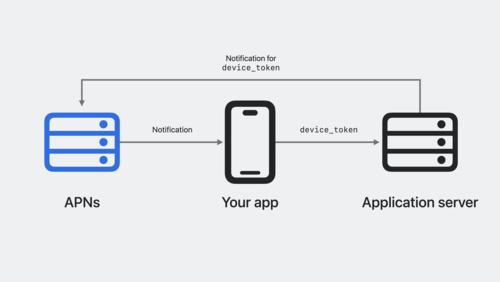
Key Features to Look for in a Push Notification Service
When evaluating push notification services, it’s essential to focus on features that align with your business goals and enhance user engagement. As competition heats up in the digital landscape, having the right tools at your disposal can make all the difference.
1. User Segmentation: A robust push notification service should allow you to segment your audience based on various criteria. This could include demographics, user behavior, or engagement levels. By targeting specific groups, you can send tailored messages that resonate with your audience, increasing the likelihood of interaction.
2. Personalization: In today’s market, generic messages are less effective. Look for services that enable you to personalize notifications using user data. This could involve incorporating the recipient’s name, preferences, or specific product recommendations. Personalized notifications lead to higher engagement rates and better customer experiences.
3. A/B Testing: To determine what types of messages work best for your audience, A/B testing is crucial. Choose a service that allows you to test different headlines, formats, and sending times. This data-driven approach helps you optimize your campaigns, ensuring that your notifications achieve the desired impact.
4. Analytics and Reporting: Comprehensive analytics are vital for understanding the effectiveness of your push notifications. A good service should provide detailed reports on open rates, click-through rates, and user engagement. This information not only helps you refine your strategy but also demonstrates the ROI of your push notification campaigns.
5. Multi-Platform Support: In a world where users interact with brands across various platforms, your push notification service must support multiple devices and operating systems. Whether your audience is on mobile, desktop, or web, ensuring consistency across platforms is key to maintaining engagement.
6. Automation and Scheduling: Time-sensitive messages can greatly enhance the relevance of your notifications. Look for services that offer automation features, allowing you to schedule messages based on user activity or important dates. This not only saves time but also ensures that your messages reach users at the most opportune moments.
7. Rich Media Support: Engaging visuals can significantly boost the effectiveness of notifications. Opt for a service that supports rich media elements such as images, videos, or interactive buttons. These elements can catch the user’s eye and encourage more interactions than traditional text-only notifications.
8. Compliance and Privacy: With growing concerns over data privacy, it’s crucial to choose a service that adheres to legal standards such as GDPR or CCPA. Ensure that the platform provides transparency about how it collects and uses data, helping you build trust with your audience.
By carefully considering these features, you can select a push notification service that not only meets your current needs but also supports your future growth. The right platform will empower you to communicate effectively and build lasting relationships with your users.
Comparing Pricing Models: Finding the Best Value for Your Budget
When it comes to selecting a push notification service, understanding the various pricing models is crucial for making an informed decision. Each service operates under different pricing structures, and the right choice can significantly impact your budget without compromising quality. Let’s break down the most common pricing models you’ll encounter.
Flat Rate Pricing
Flat rate pricing is straightforward and typically involves a single monthly fee for a set number of notifications or features. This model is ideal for businesses that need predictable costs and want to avoid unexpected expenses. Here are some advantages:
- Budget-Friendly: Simple budgeting as you know exactly what you’ll pay each month.
- Unlimited Notifications: Often includes unlimited push notifications within the plan, ensuring you never miss out on reaching your audience.
- Consistent Features: You get access to a consistent set of features without worrying about fluctuating costs.
Pay-As-You-Go
This model allows you to pay based on usage, meaning you only pay for the notifications you actually send. It’s perfect for businesses with fluctuating needs. Consider the benefits:
- Flexibility: Scale your spending according to your business growth or seasonal demands.
- Cost Efficiency: Only pay for what you use, which can save money for smaller businesses or those just starting.
- Try Before You Commit: Ideal for testing the service without a long-term commitment.
Tiered Pricing
Tiered pricing offers several packages that cater to different business sizes or needs, allowing you to choose a plan that aligns with your budget and goals. This model has its own set of pros:
- Customization: Pick a plan that best fits your current requirements, with the option to upgrade as you grow.
- Feature-Rich: Higher tiers often come with advanced features that can enhance your marketing efforts.
- Value for Money: Depending on your needs, you can find tiers that offer the best value for the features included.
Table Comparison of Pricing Models
| Pricing Model | Best For | Key Features |
|---|---|---|
| Flat Rate | Businesses with consistent needs | Predictable costs, unlimited notifications |
| Pay-As-You-Go | Startups or fluctuating businesses | Flexibility, cost savings, no commitment |
| Tiered Pricing | Growing businesses | Customization, potential for advanced features |
Ultimately, the best pricing model for your push notification service will depend on your specific business needs and budget constraints. Take the time to assess your current and future requirements, ensuring that the service you choose offers both the features you need and the value you expect. By exploring these models, you can find a solution that not only fits your budget but also enhances your customer engagement efforts.
User Experience Matters: How Design Impacts Engagement
When it comes to engaging users, design isn’t just about aesthetics—it plays a critical role in shaping how those users interact with your content. Good design enhances usability and makes it easier for users to respond to push notifications, leading to higher engagement rates. A well-crafted notification can grab attention, provide value, and ultimately drive actions that align with your business goals.
One of the key elements of effective push notification design is clarity. Users should instantly understand what the notification is about and what action they’re encouraged to take. To achieve this, consider the following:
- Concise Messaging: Keep your text short and to the point.
- Compelling Call-to-Action (CTA): Use action-oriented language that motivates users to click.
- Visual Appeal: Incorporate brand colors and logos to make notifications recognizable.
Another important aspect is the timing and frequency of your push notifications. Users are more likely to engage with notifications that arrive at the right moment. If notifications are sent too frequently, they can become a nuisance, leading to opt-outs. Utilize the following strategies to optimize timing:
- Segmentation: Target specific user groups based on behavior, preferences, or demographics.
- A/B Testing: Experiment with different sending times to discover peak engagement windows.
- Analytics: Monitor user interactions to refine your approach continuously.
Moreover, the aesthetic aspects—such as font choice, color scheme, and iconography—can significantly influence user perception and engagement. Ensure that your design elements align with your overall brand identity while also being easily legible on mobile devices. For instance:
| Design Element | Impact on Engagement |
|---|---|
| Font Size | Improves readability, increasing the likelihood of user interaction. |
| Color Contrast | Can draw attention and make notifications stand out in a crowded notification tray. |
| Icon Use | Enhances visual recognition, making notifications more appealing and memorable. |
Lastly, remember that user preferences evolve. Keeping a pulse on design trends and user feedback is essential for staying relevant. Regularly solicit input from your audience to understand how they perceive your push notifications and what improvements could enhance their experience. By doing so, you’re not only maintaining user interest but also building a loyal customer base that appreciates your efforts.

Integrations That Count: Ensuring Compatibility with Your Tech Stack
When choosing a push notification service, compatibility with your existing tech stack is crucial. You want a platform that seamlessly integrates with the tools and systems you already rely on. Consider these key aspects to ensure a smooth integration process:
- API Accessibility: Look for services that offer robust APIs. This allows for easy customization and integration with your current applications, ensuring that you can push notifications without any hiccups.
- Third-Party Integrations: Check if the service supports popular tools like CRM systems, analytics platforms, and content management systems. The more compatible it is with your existing software, the easier it will be to adopt.
- Platform Support: Ensure that the notification service is compatible across various platforms—be it web, iOS, or Android. This ensures your messages reach users wherever they are.
- User-Friendly Setup: A complicated integration process can lead to wasted time and resources. Look for services that offer guided setups or pre-built integrations to simplify the onboarding experience.
Having a clear understanding of how the push notification service will fit into your current ecosystem is vital. Here are some specific questions to ask yourself:
| Question | Importance |
|---|---|
| Does it support my CMS? | High |
| Are there plugins available? | Medium |
| Is there a mobile SDK for my app? | High |
| Can it integrate with my analytics tools? | High |
Once you’re convinced of the service’s compatibility, you can also explore additional features that can enhance your notification strategy. Consider:
- Segmentation Capabilities: A good push notification service should allow you to segment your audience effectively. This ensures the right messages reach the right people, increasing engagement rates.
- Real-Time Data: Look for services that provide real-time analytics. This helps you adjust your strategies on the fly, maximizing your push notifications’ impact.
- Personalization Options: Personalized messages perform better. Choose a platform that allows for tailored notifications based on user behavior and preferences.
Incorporating a new push notification service into your tech stack should feel like adding a new team member rather than a cumbersome task. By prioritizing compatibility, you set the stage for a successful integration that enhances your communication strategy rather than complicating it. Remember, the right service should not only fit your current needs but also adapt as your tech stack evolves.
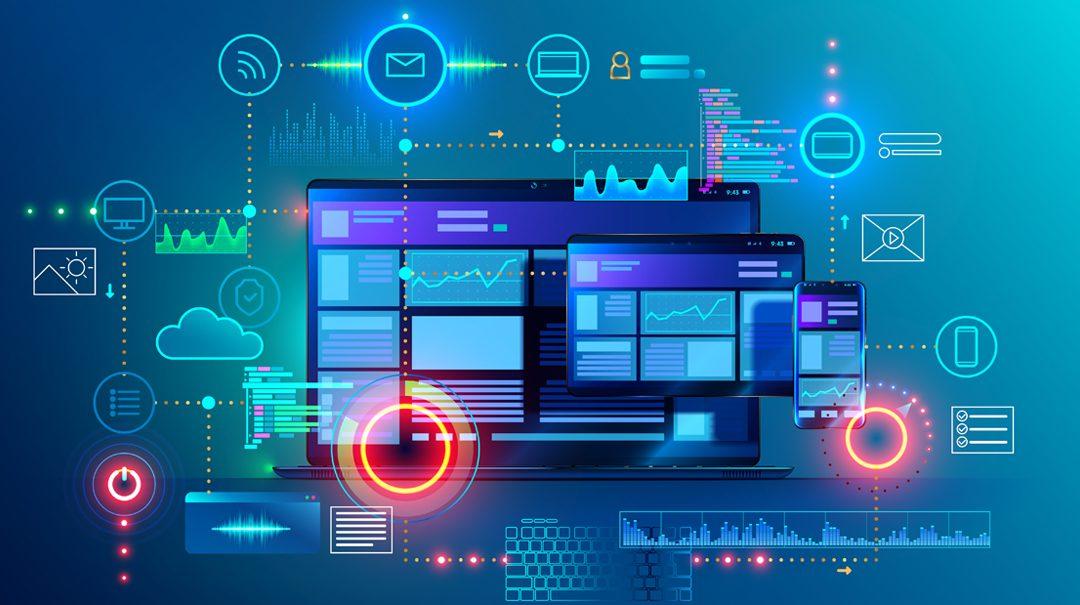
Real-Time Analytics: Why You Should Prioritize Insights
In the rapidly evolving digital landscape, businesses are inundated with data. However, the real challenge lies in transforming this data into actionable insights. Real-time analytics provides the means to not only observe but also interpret this data instantaneously, paving the way for informed decision-making and strategic planning. When it comes to push notifications, leveraging real-time analytics can significantly enhance engagement and optimize user experience.
Imagine being able to track user behavior as it happens. With real-time analytics, you can:
- Monitor User Engagement: Understand which notifications resonate with your audience in real time, allowing you to pivot your strategy quickly.
- Segment Users Dynamically: Create tailored notifications based on users’ current actions or preferences, maximizing relevance and impact.
- Measure Campaign Effectiveness: Evaluate the performance of your push notifications immediately, enabling you to adjust messaging or timing on the fly.
Furthermore, the integration of real-time analytics with push notification services enhances your ability to engage users effectively. For example, by analyzing real-time data, you can identify trends that inform your messaging strategy. This could mean sending reminders for abandoned carts just moments after a user leaves your site, or delivering time-sensitive offers that cater to users’ immediate interests.
Consider this simple table comparing the benefits of using real-time analytics for push notifications versus traditional analytics:
| Feature | Real-Time Analytics | Traditional Analytics |
|---|---|---|
| Data Processing Speed | Instantaneous | Delayed (often hours or days) |
| User Engagement Adaptation | Dynamic adjustments | Static strategies |
| Personalization Capability | Highly personalized | Generic messaging |
Moreover, prioritizing real-time insight not only allows for a more agile approach to marketing but also fosters a deeper connection with your audience. When users receive timely and relevant notifications, they are more likely to engage, convert, and remain loyal to your brand. This creates a cycle of continuous feedback that fuels ongoing improvement.
if you want to stay ahead of the competition and make the most of your push notification strategy, incorporating real-time analytics is not just beneficial—it’s essential. By prioritizing insights, you empower your team to make data-driven decisions that enhance user experience and drive growth.
Customization Capabilities: Tailoring Messages for Maximum Impact
In the realm of push notifications, one size definitely does not fit all. To truly engage your audience, customization is key. The most effective push notification services offer a range of options to tailor messages based on user preferences, behavior, and demographics. By taking advantage of these features, you can ensure that your notifications resonate with your audience and drive meaningful interactions.
First and foremost, consider the use of personalization. Addressing users by their names or referencing their recent activities can create a sense of connection. For instance, if a user has recently browsed a specific product, sending a notification that says, “Hi [Name], we thought you might love this!” can significantly increase engagement rates. Personalization makes messages feel more relevant and timely, fostering a relationship between the brand and the customer.
Another powerful aspect of customization is segmentation. Most modern push notification platforms allow you to segment your audience based on various criteria such as location, behavior, or preferences. This means you can send targeted messages tailored to specific groups. For example:
- New Users: Welcome messages with tips on how to use the app.
- Frequent Shoppers: Exclusive offers or loyalty rewards.
- Inactive Users: Re-engagement messages that highlight new features or products.
Timing is also a critical factor in ensuring that your messages hit the mark. A good push notification service allows for scheduling and automation. By analyzing user activity data, you can determine the optimal times to send notifications. For example, if your analytics show that users are most active in the evening, scheduling your messages for that time can lead to higher open rates and enhanced user engagement.
Moreover, the content of your messages should not be overlooked. Utilizing rich media such as images, emojis, or even videos can elevate the impact of your notifications. Instead of a plain text message, consider using an eye-catching image that highlights a promotion or feature. This visual appeal can draw users in and encourage interaction, leading to higher conversion rates.
To sum it up, customizing your push notifications is not just about changing the text; it’s about creating a dynamic communication strategy. By leveraging personalization, segmentation, optimal timing, and rich media, you can craft messages that not only capture attention but also foster loyalty and drive results.
| User Type | Message Type | Goal |
|---|---|---|
| New Users | Welcome Message | Engagement |
| Frequent Shoppers | Exclusive Offers | Retention |
| Inactive Users | Re-engagement Campaign | Reactivate |

Segmentation Strategies: Targeting the Right Audience
When it comes to push notifications, the effectiveness of your communication can vary significantly based on how well you understand and reach your audience. By utilizing effective segmentation strategies, you can ensure that your messages resonate with the right people at the right time. This tailored approach not only increases engagement but also enhances user experience, leading to higher retention rates.
Demographics: One of the most straightforward methods of segmentation is by demographics. Understanding basic characteristics such as age, gender, and location helps you craft notifications that align with the interests and needs of specific groups. For example:
- Young adults: Focus on trends, entertainment, and social events.
- Parents: Highlight family-oriented promotions or educational content.
- Professionals: Share career development opportunities or networking events.
Behavioral Patterns: Another critical segmentation strategy involves analyzing user behavior. By tracking how users interact with your app or website, you can create segments based on actions such as purchase history, app usage frequency, or engagement levels. Consider these behavioral segments:
- Frequent users: Send them exclusive offers or loyalty rewards.
- Inactive users: Re-engagement notifications can rekindle their interest.
- New users: Provide onboarding tips and introductory offers.
Psychographics: Delve deeper into your audience’s motivations and preferences by utilizing psychographic segmentation. This approach looks beyond basic demographics to uncover the values, interests, and lifestyles of your users. By understanding these aspects, you can tailor push notifications to resonate on a personal level. Here are some psychographic segments to consider:
- Health-conscious individuals: Promote wellness tips, fitness classes, or healthy recipes.
- Tech enthusiasts: Share the latest gadget releases or tech news.
- Adventure seekers: Alert them to travel deals or outdoor activities.
| Segment Type | Example | Notification Strategy |
|---|---|---|
| Demographics | Young Adults | Promote social events |
| Behavioral | Frequent Users | Exclusive rewards |
| Psychographic | Health-conscious | Wellness tips |
Lastly, don’t forget about geographic segmentation. Depending on where your users are located, they may have different needs and preferences. Tailoring notifications based on regional events, weather, or local culture can significantly enhance their relevance. For instance:
- Urban users: Highlight events happening in their city.
- Rural users: Share offers related to outdoor activities or local businesses.
By implementing these segmentation strategies, you can create a highly personalized experience that speaks directly to your audience’s interests and needs. The result? More effective push notifications that lead to greater engagement and loyalty. Remember, it’s not just about sending out notifications; it’s about sending the right notifications to the right people.

Automation and Scheduling: Streamlining Your Communication
In the fast-paced world of digital communication, the importance of automation and scheduling cannot be overstated. By leveraging these tools, businesses can ensure that their messages reach the right audience at the optimal time. It not only saves time but also enhances engagement, making it a win-win situation for brands and consumers alike.
Imagine crafting a perfectly worded push notification to announce a flash sale. Instead of manually sending it out at a specific time, automation allows you to schedule this notification to be delivered exactly when your audience is most likely to interact with it. This level of strategic timing can significantly boost your click-through rates and drive sales.
Moreover, automation tools often come with advanced analytics features. These insights provide valuable data on user behavior, allowing you to refine your communication strategy continuously. You can segment your audience based on their interaction with previous notifications, ensuring that your messages are tailored to specific groups. This personalization leads to higher engagement and customer satisfaction.
When considering your options, look for push notification services that offer robust automation features. Here are some key aspects to consider:
- Scheduling Flexibility: Ensure the platform allows for precise timing and recurrence patterns.
- User Segmentation: Choose a service that enables you to group users based on behavior or preferences.
- A/B Testing Capabilities: Look for platforms that let you test different messages or timing strategies to see what resonates best.
- Performance Analytics: Opt for tools that provide in-depth analytics to track the success of your notifications.
Another advantage of automation is the ability to set up triggered notifications. For example, if a user abandons their cart, an automated push notification reminding them of their forgotten items can be instantly sent. This not only helps recover potentially lost sales but also enhances the user experience by providing timely reminders.
| Feature | Benefits |
|---|---|
| Automation | Reduces manual effort and ensures timely delivery. |
| Scheduling | Optimizes communication based on audience activity. |
| User Segmentation | Enables personalized messaging for higher engagement. |
| Analytics | Provides insights for continuous improvement. |
Ultimately, selecting a push notification service that prioritizes automation and scheduling will streamline your communication efforts. It allows you to focus more on creating compelling content while the platform takes care of the logistics. As you explore your options, keep these features in mind to ensure you choose a solution that aligns with your business goals and enhances your customer engagement strategy.
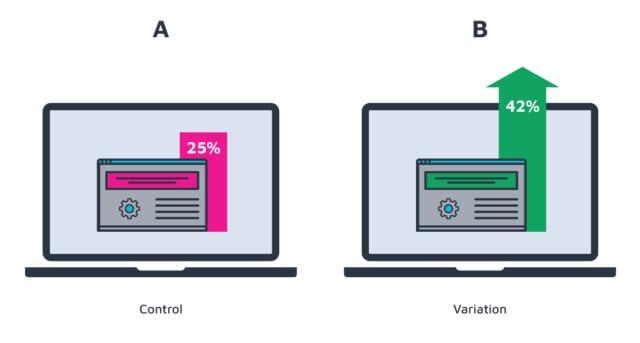
The Role of A/B Testing in Boosting Your Notification Success
A/B testing is a powerful tool that can significantly enhance the effectiveness of your push notifications. By allowing you to compare two versions of a notification, A/B testing lets you gather valuable insights into what resonates best with your audience. This process is essential for optimizing your messaging strategy and driving higher engagement rates.
When implementing A/B testing for your notifications, consider the following elements:
- Message Content: Experiment with different wording, emojis, or personalization techniques to see what captures attention.
- Timing: Test notifications sent at various times of the day or week to find the optimal moment for your audience.
- Call to Action (CTA): Evaluate different CTAs to determine which prompts your users to take action.
- Visual Elements: Incorporate images or graphics in some versions to assess their impact on engagement.
By systematically testing these variables, you can uncover the most effective combinations that drive user interaction. One of the key advantages of A/B testing is its ability to provide data-driven results. Instead of relying on gut feelings or assumptions, you can make informed decisions based on real user behavior.
To illustrate the impact of A/B testing, consider the following hypothetical results:
| Notification Version | Open Rate | Click-Through Rate |
|---|---|---|
| Version A | 20% | 5% |
| Version B | 35% | 10% |
In this example, Version B outperforms Version A significantly, indicating that the changes made in Version B resonate more with your audience. Such insights empower you to refine your notification strategy continuously.
Moreover, A/B testing is not a one-time endeavor; it’s an ongoing process. As user preferences and behaviors evolve, regular testing ensures that your notifications remain relevant and engaging. By adopting a culture of experimentation, you can stay ahead of the curve and deliver notifications that truly connect with your audience.
leveraging A/B testing in your notification strategy is key to boosting success. With every test, you gather insights that can lead to improvements, ultimately enhancing user engagement and satisfaction. Remember, the goal is not just to send notifications, but to send notifications that matter.

Customer Support: Why Reliable Assistance is Essential
In today’s fast-paced digital landscape, having access to reliable customer support is not just an added bonus; it’s a necessity. When businesses implement push notification services, the ability to seek assistance quickly can make or break the effectiveness of the platform. Customers value their time, and when they encounter issues, they expect prompt, effective help.
Imagine this: you’ve just launched your first push notification campaign, but something isn’t functioning as expected. If you’re unable to get the help you need, the potential for lost engagement and revenue skyrockets. Here are several reasons why dependable customer support is crucial:
- Timely Resolutions: Quick responses from support can ensure that you continue to reach your audience without prolonged disruptions.
- Guidance on Best Practices: Support teams can offer insights tailored to your specific needs, helping you maximize the effectiveness of your campaigns.
- Understanding Complex Features: Push notification services often come with a plethora of features. Having someone to explain these can enhance your overall experience.
- Building Trust: Reliable support fosters a sense of trust in the provider, which is essential for long-term partnerships.
Moreover, consider the impact on customer satisfaction. If your audience starts receiving irrelevant notifications due to a technical glitch, their engagement may plummet. A strong support team can help you navigate through these challenges efficiently, ensuring that your messages resonate with your audience.
When evaluating push notification services, look for platforms that offer multiple support channels. This can include:
- Live Chat: Instant messaging can resolve issues quickly without the hassle of waiting on hold.
- Email Support: For less urgent inquiries, responsive email support can provide detailed guidance.
- Knowledge Bases: Comprehensive documentation can empower you to solve common problems independently.
To further illustrate the importance of customer support in push notification services, here’s a comparison of popular platforms based on their support offerings:
| Platform | Live Chat | Email Support | Knowledge Base |
|---|---|---|---|
| Platform A | ✔️ | ✔️ | ✔️ |
| Platform B | ❌ | ✔️ | ✔️ |
| Platform C | ✔️ | ❌ | ✔️ |
Ultimately, the best push notification service is one that not only meets your functional needs but also provides the support necessary to navigate any potential hurdles. Don’t underestimate the impact of reliable assistance; it’s a key ingredient in the recipe for your success.

Security and Compliance: Safeguarding Your Data
When choosing a push notification service, it’s crucial to consider how these platforms handle your data. Security and compliance should be at the forefront of your decision-making process. After all, your audience’s trust hinges on how well you protect their information.
First and foremost, look for services that offer end-to-end encryption. This ensures that the data transmitted between your application and the notification service remains confidential. Without encryption, sensitive data can be intercepted, leading to potential breaches. It’s not just about sending notifications; it’s about sending them securely.
Another key factor is compliance with regulations like GDPR, HIPAA, or CCPA, depending on your target audience. These regulations set stringent guidelines on how personal data should be handled. A platform that complies with these standards shows a commitment to protecting user privacy. Make sure to check whether the service provides documentation or certification that proves their compliance status.
Additionally, consider the data retention policies of the push notification service. Some platforms may keep user data indefinitely, while others allow you to set specific retention periods. Choose a service that aligns with your company’s policies regarding data management. You want to ensure that data is not stored longer than necessary and that it can be deleted upon user request.
| Feature | Importance | Example Services |
|---|---|---|
| End-to-End Encryption | Secures data during transmission | OneSignal, Airship |
| Compliance Certifications | Adheres to legal data protection standards | Pusher, Firebase |
| Data Retention Settings | Controls how long data is stored | PushEngage, Pushwoosh |
Don’t overlook the importance of a robust user opt-in process. Ensure that the platform allows you to create transparent opt-in forms that explain why you’re collecting data and how it will be used. This not only fosters trust but also protects you from potential legal issues stemming from unauthorized data collection.
always read the terms of service and privacy policy of any push notification service. A reputable platform will clearly outline how they handle your data, including any third-party sharing practices. If anything seems unclear or overly complex, it’s a red flag. Opt for clear communication and transparency when it comes to your users’ data.
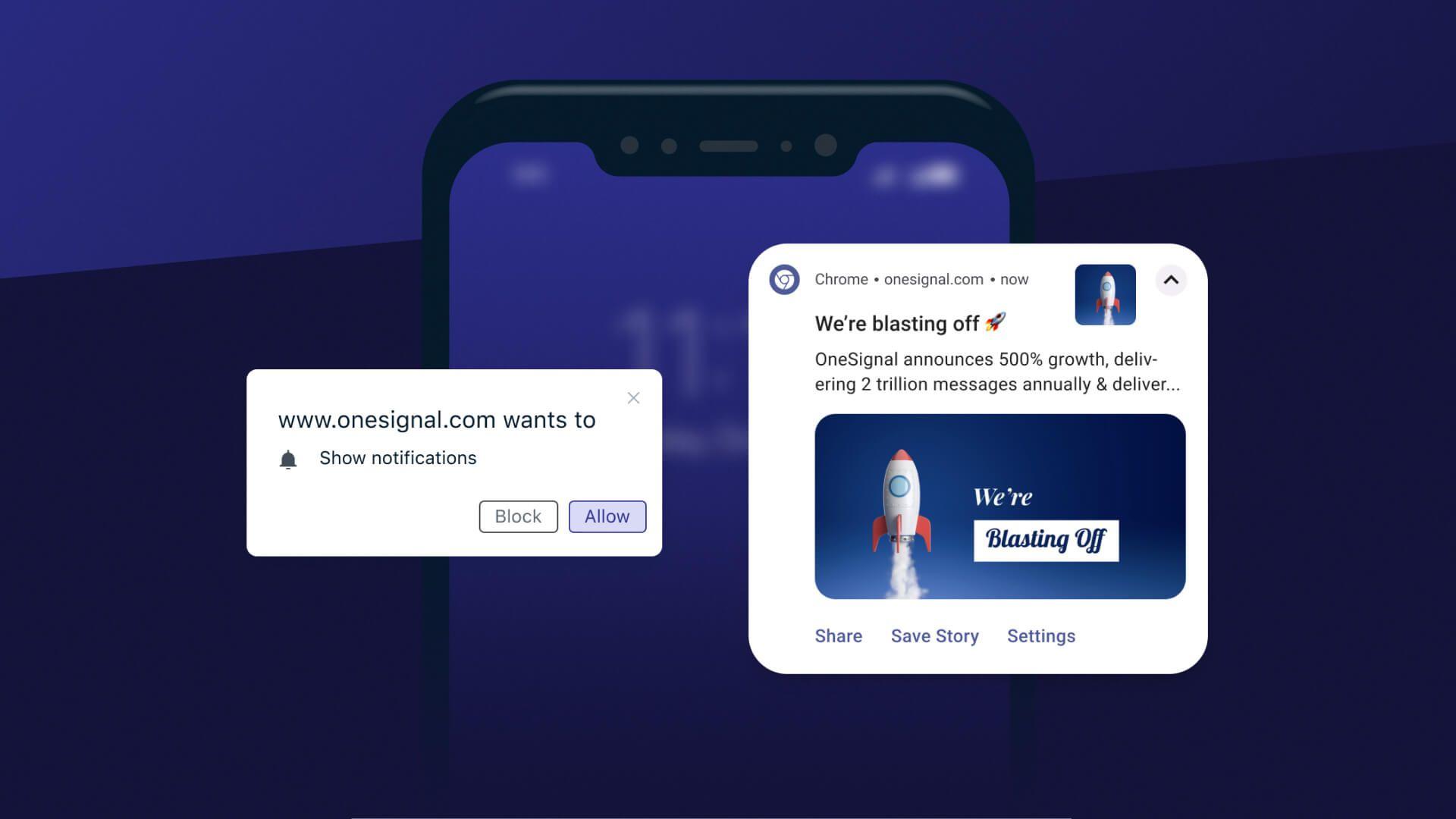
Success Stories: Brands That Thrived with the Right Push Notifications
Push notifications can significantly boost user engagement and retention when executed effectively. Let’s take a look at some brands that mastered the art of push notifications and reaped impressive rewards.
1. Food Delivery App
A popular food delivery service implemented personalized push notifications to improve customer engagement. By analyzing user behavior, they sent tailored messages highlighting meal options based on previous orders. This strategy led to:
- 25% increase in repeat orders.
- 40% higher click-through rates on promotional notifications.
2. E-commerce Giant
One leading e-commerce platform optimized their abandoned cart notifications. Instead of generic reminders, they used dynamic content that included images of the specific items left behind, along with personalized discounts. The results were remarkable:
- 15% recovery of abandoned carts within 24 hours.
- 50% increase in user engagement on mobile devices.
3. Fitness App
A fitness tracking app utilized motivational push notifications to encourage users to meet their daily goals. By sending reminders at strategic times, like early morning or post-workout, they created a supportive ecosystem that resulted in:
- 30% increase in daily active users.
- 20% growth in user retention over three months.
4. Travel Agency
This agency took advantage of push notifications to share real-time travel deals and last-minute offers. By segmenting their audience based on past travel habits, they achieved impressive engagement metrics:
- 35% click-through rate for time-sensitive deals.
- 60% increase in bookings during holiday seasons.
5. News App
To keep users informed and engaged, a popular news app sent tailored notifications based on user interests. This approach not only kept users returning but also encouraged interaction with articles, leading to:
- 40% increase in time spent on the app.
- 25% higher article shares across social media.
Conclusion
These success stories illustrate that when brands harness the power of push notifications effectively, the benefits can be substantial. Personalization, timely delivery, and relevance are key factors that can elevate a brand’s engagement levels and drive conversion rates. By learning from these examples, businesses can explore new push notification strategies to enhance their user experience and ultimately thrive in their respective markets.
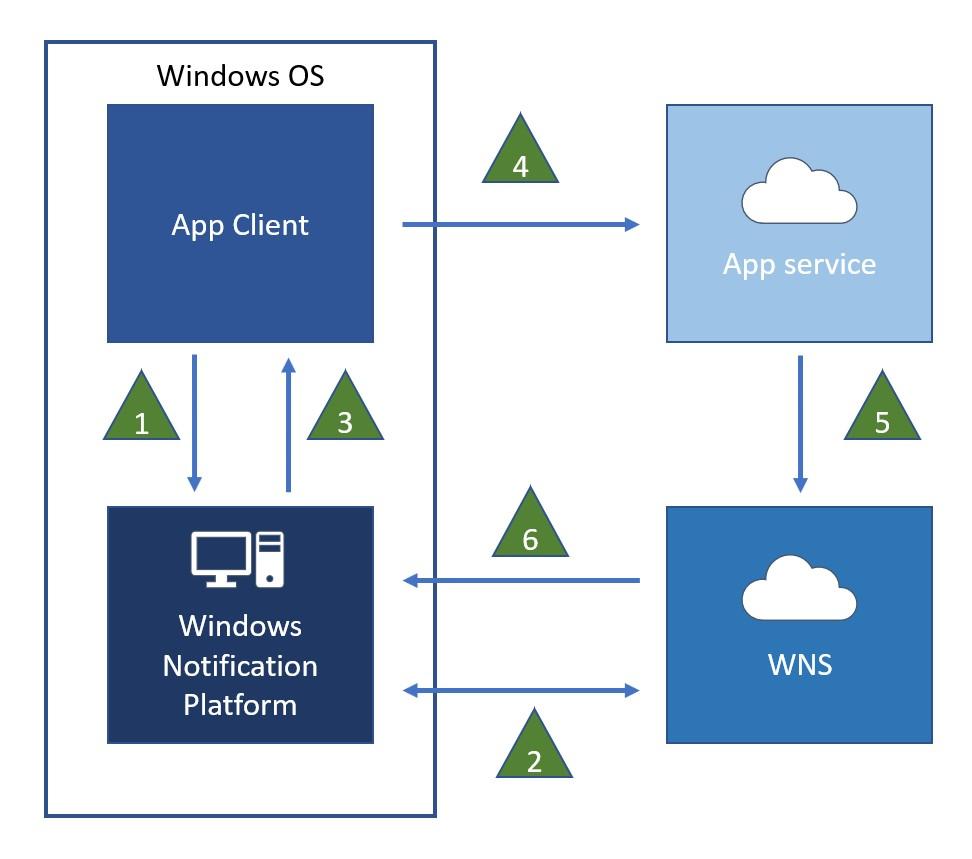
Final Thoughts: Making an Informed Decision for Your Business
When it comes to selecting the best push notification service for your business, the decision-making process can feel overwhelming. With so many options available, understanding your specific needs and how different platforms can meet them is essential. A well-chosen push notification service can enhance user engagement, improve retention rates, and ultimately drive conversions.
First and foremost, consider the features that are most important to your business. Do you need advanced segmentation capabilities to target specific user groups? Or perhaps real-time analytics to track the effectiveness of your notifications? Make a list of must-have features and compare them against the offerings of various services. Here are some key features to keep an eye out for:
- User segmentation: Ability to group users based on behavior, preferences, or demographics.
- Analytics and reporting: Tools for measuring engagement rates, click-through rates, and user interactions.
- A/B testing: The option to test different messages or timing to determine what works best.
- Integration capabilities: Compatibility with your existing tech stack, such as CRM and marketing automation tools.
Next, think about the budget. Push notification services can vary widely in pricing, from free plans with limited features to premium options that offer comprehensive capabilities. Understand what you are willing to spend and look for platforms that align with your budget while still offering the necessary features. Don’t forget to factor in potential expansion costs as your business grows. Here’s a quick breakdown of typical pricing models:
| Pricing Model | Description |
|---|---|
| Free Tier | Basic features for startups or small businesses with limited needs. |
| Monthly Subscription | Flat fee for access to premium features and increased usage limits. |
| Pay-as-you-go | Charges based on notifications sent, ideal for businesses with variable needs. |
Moreover, consider the user experience. A service that is easy to navigate and integrates smoothly with your existing platforms will save you time and frustration. Look for reviews and testimonials that highlight the usability of the platform. A user-friendly interface can make a significant difference in how effectively you leverage push notifications for customer engagement.
Lastly, don’t underestimate the importance of customer support. Reliable, responsive support can be a game-changer, especially if you encounter issues or have questions during implementation. Research platforms that offer robust customer service options, such as live chat, email support, and comprehensive documentation. Solid support can alleviate concerns and make your decision feel more secure.
making an informed decision about a push notification service requires a thoughtful approach. By assessing your business needs, budget, and the features that matter most, you can confidently choose a platform that aligns with your goals. The right service not only improves communication with your audience but also paves the way for growth and success in your business journey.
Frequently Asked Questions (FAQ)
Q&A: 25 Best Push Notification Services – How to Pick the Right Platform
Q1: What are push notifications, and why are they important?
A1: Push notifications are messages sent directly to a user’s device, even when they aren’t actively using an app. They are essential because they help engage users, keep them informed about updates, and drive user interaction. Think of them as friendly nudges that remind users to check out new content, offers, or features!
Q2: With so many push notification services available, how do I choose the right one?
A2: Great question! Start by identifying your specific needs. Consider factors like user base size, the platforms you operate on (iOS, Android, web), and your budget. Look for features that align with your goals, such as segmentation, analytics, and customization options. The right service should make your life easier, not complicate it!
Q3: What features should I look for in a push notification service?
A3: Key features to consider include A/B testing capabilities, user segmentation, scheduling options, real-time analytics, and ease of integration with your existing systems. Also, assess how user-friendly the dashboard is. You want something that your team can navigate without pulling their hair out!
Q4: Are there any free options available for push notification services?
A4: Absolutely! Many platforms offer free tiers with limited features, which can be perfect for startups or small businesses. Just keep in mind that as your needs grow, you may want to upgrade to access more robust functionalities. Always check if the service can scale with your business!
Q5: How can push notifications improve user engagement?
A5: Push notifications can significantly boost user engagement by delivering timely, relevant content directly to users. For instance, sending personalized messages based on user behavior or preferences can make users feel valued. When users receive tailored content, they’re more likely to interact with your app or website!
Q6: What are some common mistakes to avoid when using push notifications?
A6: One major mistake is sending too many notifications, which can annoy users and lead to uninstalls. Another is failing to segment your audience; generic messages often don’t resonate. Lastly, always A/B test your notifications to see what works best. Finding the right balance is key to keeping users engaged.
Q7: Can I automate push notifications, and should I?
A7: Yes, many platforms offer automation features! Automating notifications based on user actions, such as signing up or abandoning a cart, can save you time and ensure timely communication. However, be careful not to automate too much—personal touches still matter!
Q8: How do I measure the success of my push notification campaigns?
A8: Look at key metrics like open rates, click-through rates (CTR), and conversion rates. Many push notification services provide robust analytics dashboards that help you track these metrics. By analyzing this data, you can refine your strategies and improve future campaigns.
Q9: Is it worth investing in a premium push notification service?
A9: If you’re serious about user engagement and retention, investing in a premium service is often worth it. The added features, support, and scalability can make a significant difference in your marketing efforts. Think of it as an investment in enhancing your user experience!
Q10: Where can I find a comprehensive list of the best push notification services?
A10: You’re in luck! We’ve compiled a list of the 25 best push notification services, detailing their features, strengths, and pricing. It’s a handy resource that can guide you in making an informed decision. Dive in, explore, and find the perfect match for your business!
By addressing these questions, readers will feel empowered and informed, ready to choose the right push notification service for their needs!
Key Takeaways
And there you have it! With our rundown of the 25 best push notification services, you’re now armed with the knowledge you need to make an informed choice. Remember, the right platform can make a world of difference in how you engage your audience and boost your business.
Consider your unique needs, explore the features that stand out to you, and don’t hesitate to take advantage of free trials where available. The world of push notifications is dynamic and ever-evolving, and finding the perfect fit for your strategy is essential for staying ahead of the competition.
So go ahead—dive into the options we’ve discussed, and unlock the potential of push notifications for your brand. Your audience is waiting for your next message, so make it count! Happy notifying!



